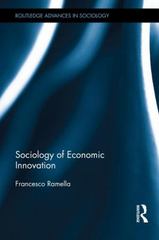1. For the next four questions, please consider the following simplified balance sheet (T-account) for Every Bank: Assets Liabilities and Equity Reserves 10,000 Checking deposits 20,000 Other assets 25,000 Equity ??? There is no other relevant information, and you can assume that the reserve ratio is the same as in lecture. Calculate this bank's required reserves, carefully following all numeric instructions. 2. Calculate this bank's excess reserves, carefully following all numeric instructions. 3. Calculate the maximum amount of new money Every Bank can create by itself, carefully following all numeric instructions. 4. If the Fed sells bonds to this bank via open market operations, this bank will have reserves and will be able to lend than before. 5. When the real interest rate rises, there's more of an incentive for people to put their money into savings accounts and other forms of saving. A. This explains why the B. Group of answer choices C. demand for loanable funds curve slopes downward D. supply of loanable funds curve slopes downward E. demand for loanable funds curve slopes upward F. supply of loanable funds curve slopes upward 6. Darla takes out a home loan from a bank. The bank's goal is to make 4% real interest on the loan. If the bank's economists predict that inflation will be 3.5% over the period before the loan is repaid, the bank should charge a nominal interest rate of_ percent. (Enter your answer "as a percent, but without the percentage sign." In other words, if you think the bank should charge 99.9 percent interest, just put 99.9 in the blank.)For the next four questions, please consider a closed economy with the following information: Government purchases = $1000 Transfer payments = $0 (none in this economy) Net taxes = $1500 Output (income) = $8000 Consumption = $3500 Calculate this economy's public savings, carefully following all numeric instructions. 500 Question 15 2.5 pts Again, please consider a closed economy with the following information: Government purchases = $1000 Transfer payments = $0 (none in this economy) Net taxes = $1500 Output (income) = $8000 Consumption = $3500 Calculate this economy's private savings, carefully following all numeric instructions.Again, please consider a closed economy with the following information: Government purchases = $1000 Transfer payments = $0 (none in this economy) Net taxes = $1500 Output (income) = $8000 Consumption = $3500 Calculate this economy's economic investment, carefully following all numeric instructions. Question 17 2.5 pts For the last time, consider the economy described above. You won't work directly with its numbers in this question, but I'm repeating them in case it's helpful: Government purchases = $1000 Transfer payments = $0 (none in this economy) Net taxes = $1500 Output (income) = $8000 Consumption = $3500 Let's say the MPC = 0.8 and the government gives a tax cut of $50. As a result, private savings will [ Select ] , public savings will [ Select ] and this [ Select ] a good idea to stimulate economic investment









